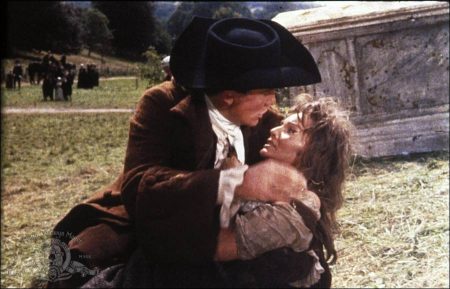Taglines: Tom Jones!… loves and loves and loves and loves…
Tom Jones movie storyline. In eighteenth-century England, “first cousins” Tom Jones and Master Blifil grew up together in privilege in the western countryside, but could not be more different in nature. Tom, the bastard son of one of Squire Allworthy’s servants Jenny Jones and the local barber Partridge, was raised by virtuous Allworthy as his own after he sent Jenny away.
Tom is randy, chasing anything in a skirt, he’s having a sexual relationship on the sly with Molly Seagrim, the peasant daughter of Allworthy’s gamekeeper. Tom is nonetheless kind-hearted and good-natured, he who is willing to defend that and those in which he believes. Blifil, on the other hand, is dour, and although outwardly pious, is cold-hearted and vengeful. Despite his randiness, Tom eventually falls in love with Sophie Western, who has just returned to the area after a few years abroad.
Despite Sophie’s love for Tom, Squire Western and his spinster sister would rather see Sophie marry Blifil rather than a bastard, who Western nonetheless liked before he knew that Tom liked Sophie. Based on half truths, Tom, out of circumstance, is forced to leave his home and strike out on his own in London. While Sophie sneaks away in search of Tom, and Squire Western and Miss Western go off in search of Sophie, Tom gets into one misadventure after another on his way to London, some involving his randiness, and some which will reveal certain aspects of his life previously unknown to him. Through it all, Sophie, deep down, is never far from his mind, even when his life is in danger.
Tom Jones is a 1963 British comedy film, an adaptation of Henry Fielding’s classic 1749 novel The History of Tom Jones, a Foundling, starring Albert Finney as the titular hero. It was one of the most critically acclaimed and popular comedies of its time,[3] and won four Academy Awards, including Best Picture. The film was produced and directed by Tony Richardson and the screenplay was adapted by playwright John Osborne.
Tom Jones was a success both critically and at the box-office. At the 36th Academy Awards, it was nominated for ten Oscars, winning four: Best Picture, Best Director for Richardson, Best Adapted Screenplay and Best Original Score. It also won two Golden Globe Awards, including Best Motion Picture – Musical or Comedy, and three BAFTA Awards, including Best Film and Best British Film. In 1999, the British Film Institute ranked it as the 51st greatest British film of the 20th century.
Castle Street in Bridgwater, Somerset was used as a location in several scenes. Cinematographer Walter Lassally has said that he thought the location unit got on very well together under the circumstances, and that the experience was satisfying. He thought Richardson rather lost his way in post-production, endlessly fixing what was not really broken.
The film was financially successful on its initial release in 1963. It came third for the year in British box office receipts, and was the 4th most popular in the United States. Produced on a budget of $1 million, it earned $16 million in rentals in North America, and another $4 million in markets other than the UK and US. The film was reissued in 1989 by The Samuel Goldwyn Company. For this release, Richardson trimmed the film by seven minutes.[3] It is available through the Criterion Collection, paired with the original version.
Tom Jones (1963)
Directed by: Tony Richardson
Starring: Albert Finney, Susannah York, Hugh Griffith, Edith Evans, Joan Greenwood, Diane Cilento, George Devine, David Tomlinson, Wilfrid Lawson, John Moffatt, Freda Jackson, Redmond Phillips
Screenplay by: John Osborne
Production Design by: Ralph W. Brinton
Cinematography by: Walter Lassally
Film Editing by: Antony Gibbs
Costume Design by: John McCorry
Set Decoration by: Josie MacAvin
Art Direction by: Edward Marshall
Music by: John Addison
MPAA Rating: None.
Distributed by: United Artists
Release Date: September 1963 (Venice)
Views: 221



